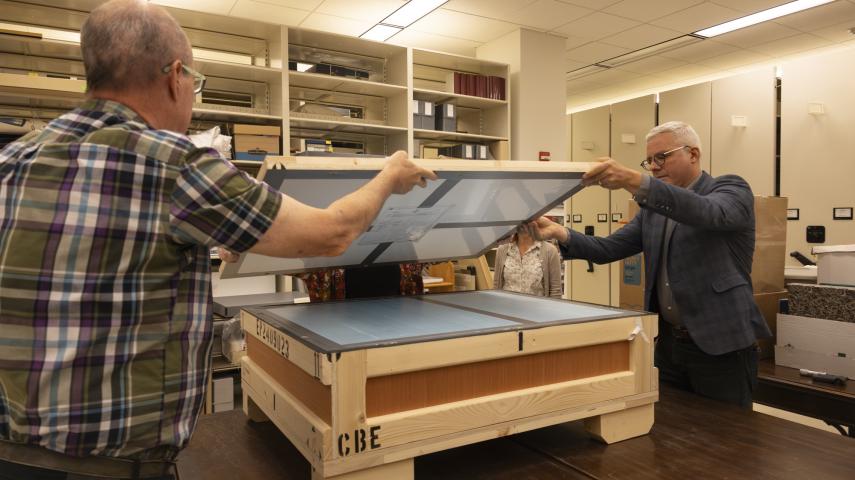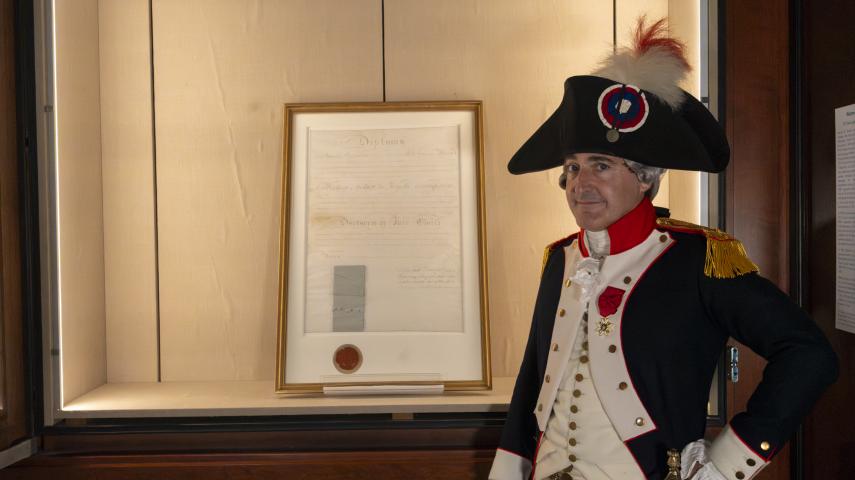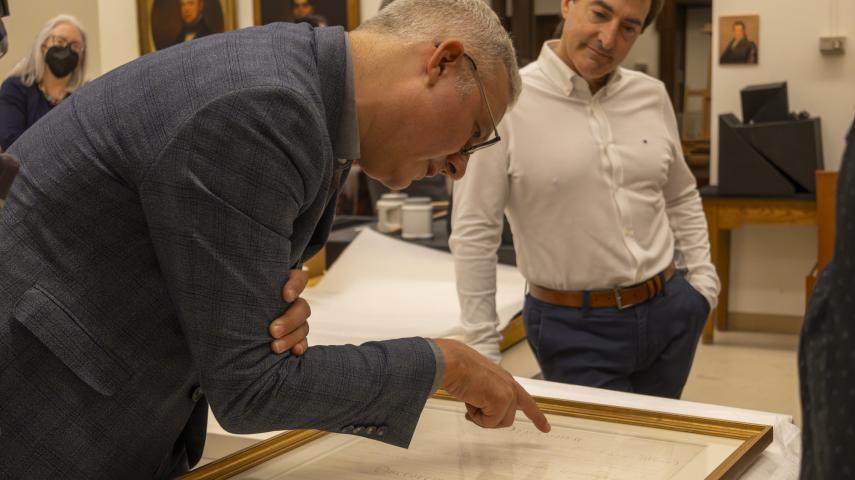By Sarah Thompson, W&M Libraries
The honorary degree that William & Mary awarded Revolutionary War General Marquis de Lafayette in 1824 is returning from France for the first time in 200 years.
The original document will be on display in Swem Library’s Special Collections Research Center until November 15, along with other rare items related to Lafayette.
“Having the document at William & Mary is a point of pride and the result of much work by many people,” said Carrie Cooper, dean of university libraries. “This will be the first time visitors can view this historical document without having to take a trip abroad.”
The honorary degree is on loan from the Chambrun Foundation who preserves and maintains Lafayette’s estate, Chateau de Lagrange, and its archives. The display of the document coincides with the commemoration of the 200th anniversary of Lafayette’s “Homecoming” celebration.
Marquis de Lafayette (1757-1834) left France at 19 years old to volunteer for the U.S. Continental Army. He was a crucial figure in the war, persuading France to support the Americans and helping secure victory at the Battle of Yorktown.
In 1824, President James Monroe believed that the younger generations had forgotten about the war and why it was fought. At that time, Lafayette was one of the few living generals of that war. Monroe invited Lafayette to tour around the states to remind the country about the fight for independence.
When Lafayette arrived in Williamsburg, he received a warm welcome from the community and was awarded the honorary degree of laws by William & Mary.
“This was an important event in William & Mary’s history, and we are excited to be a part of commemorating it,” said Director of Special Collections Jay Gaidmore.
A rare item like this requires special attention. Since 2021, Gaidmore has put tremendous energy toward obtaining the loan, ensuring all details meet the Chambrun foundation’s requirements including those related to travel and escort of the document, installation, security, and display.
This was the first time the library has ever borrowed a special item from overseas. Gaidmore said he sought guidance from others at William & Mary, including the Muscarelle Museum staff, who have more experience with international loans, uncrating to installment, and fine arts displays.
“It’s a priceless document, so there were a lot of rules about how it can travel, what type of environment it can be displayed in, who can handle it, and so on,” he said. “We want to make sure that the document returns to France in the same excellent shape it arrived in.”
Along with the display of the degree, there will be an exhibit of special collections items related to Lafayette in the lobby of Special Collections. The exhibit will feature letters, documents, images, and ephemera concerning Lafayette’s role in the Virginia Campaign of 1781 during the American Revolution, his visit to Virginia during his tour of the United States in 1824-1825, and James Armistead Lafayette, the enslaved spy who provided immeasurable support to the Continental Army during the Virginia campaign.
William & Mary is not the only one celebrating this historic event. To mark the 200th anniversary of Lafayette’s return to the U.S., Colonial Williamsburg will reproduce some of the events of that day on October 20, including a carriage procession, military salutes and music, an acceptance of the degree, and a dramatic presentation of Lafayette portrayed by Mark Schneider at the Wren Building.
“It’s a timeless celebration,” said Bill Schermerhorn ‘82, creative director for Colonial Williamsburg’s signature events. “It’s a 21st century Williamsburg coming to celebrate a 19th century Lafayette who’s going to reminisce his 18th century victory.”
Schermerhorn is excited to bring the history of that day in 1824 to life. He has done an immense amount of research to ensure that the celebration reflects the historic homecoming and evokes thoughtfulness about Lafayette’s fight for democracy in a modern light.
Swem’s Special Collections Research Center will have expanded weekend hours (10 a.m.- 3 p.m.) through November 15 to allow the campus and broader community to view this important piece of U.S. history.




